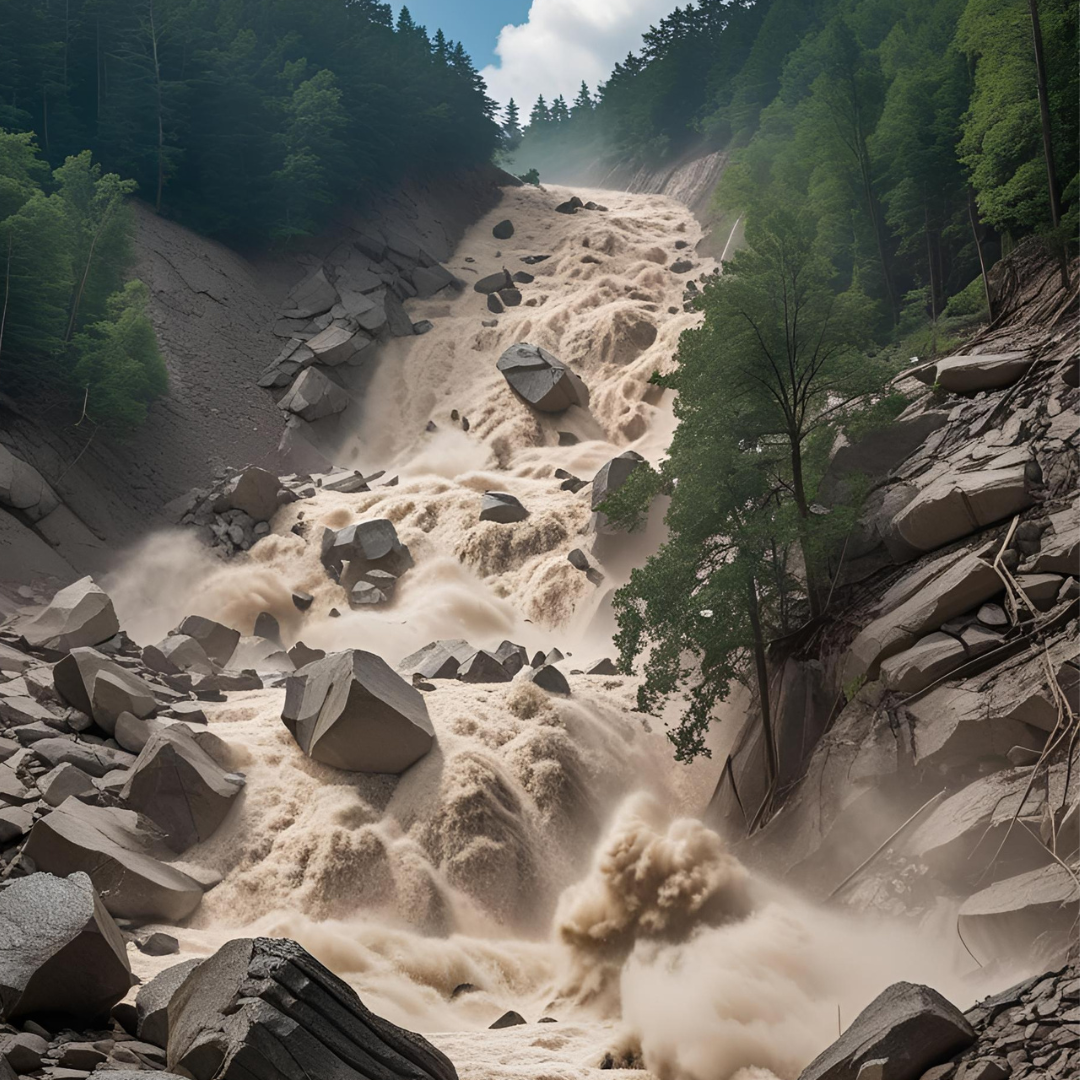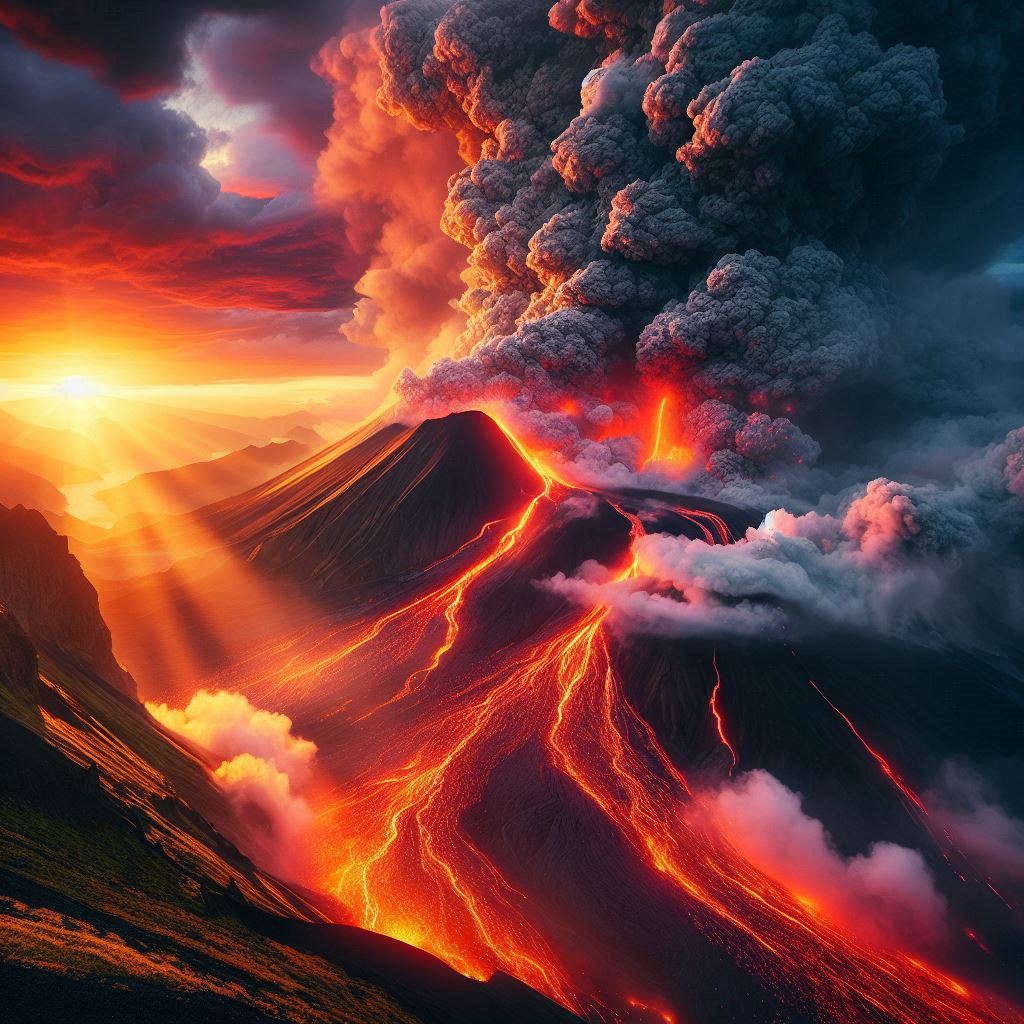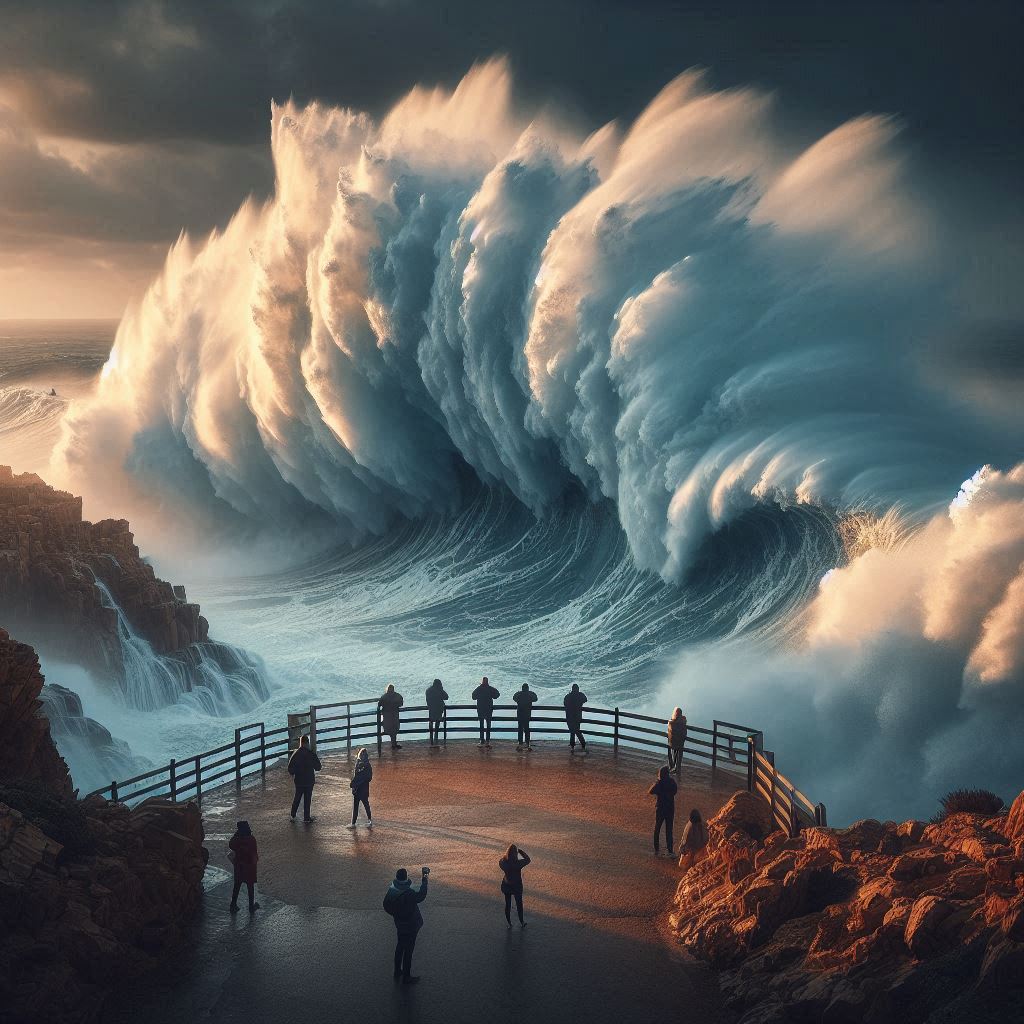¿Alguna vez te has topado con un geólogo mirando una montaña como si fuera una bomba de relojería? ¿O examinando una playa paradisíaca con la expresión de quien acaba de ver un spoiler del próximo apocalipsis?
¡No entres en pánico (todavía)! Acabas de conocer a un miembro de la élite, de la legión, de los... ¡ASUSTÓLOGOS!
(Sí, ese es el término "no oficial", "entre comillas" y con mucho cariño, para los valientes geólogos/as de riesgos geológicos).
¿Quiénes son estos seres que ven catástrofes en una piedra bonita? Pues...

Los Detectives de la Desgracia: Mientras tú ves una ladera verde y frondosa, ellos ven un deslizamiento potencial en cámara lenta. Donde tú ves un río serpenteante, ellos calculan la velocidad a la que te mojaría en una crecida. ¡Son expertos en leer las arrugas de la Tierra y saber cuándo va a estornudar... FUERTE!
Los Nostradamus de las Rocas: No usan bolas de cristal, usan martillos, drones, satélites y ecuaciones que harían llorar a tu calculadora científica. Tratan de predecir erupciones volcánicas, terremotos, tsunamis, hundimientos... ¡No por gusto, sino para que NO pasen (o para que estemos listos si pasan)! Su lema: "Mejor parecer alarmista que estar en una lista... de desaparecidos."
Los Mensajeros Incómodos: Su trabajo consiste, básicamente, en llegar y decir: "Eh, disculpen la molestia, pero ese terreno donde están construyendo su casa/carretera/centro comercial... está conspirando para enterrarlos/arrastrarlos/mojarlos. Sólo digo." Spoiler: No siempre les hacen caso. Pero insisten. ¡Héroes de la verdad geológica!

Los Superhéroes Anónimos: No saltan edificios (aunque sí grietas), pero SALVAN VIDAS. Cada mapa de riesgo, cada alerta temprana, cada "no construyas aquí" es un desastre evitado, una familia a salvo, una comunidad protegida. Su superpoder: Traducir el lenguaje de las piedras en seguridad para todos.
¿Por qué "Asustólogos"? 😂 Porque su mensaje suele ser: "¡Cuidado! ¡Peligro! ¡Riesgo inminente!" Y claro, a veces da un poco de yuyu. Pero en el fondo, ¡ES GRITAR "FUEGO" ANTES DE QUE EMPIECE A ARDER! (O a temblar, o a inundar...).

Así que, la próxima vez que veas a un geólogo mirando nervioso un barranco o frunciendo el ceño ante una fallita:
Dales las gracias. (En serio, su trabajo es vital).
No les digas que exageran. (Suelen tener MUY buenas razones).
Ofréceles un café. (Analizar desastres potenciales da sed... y estrés).
Bromea con lo de "Asustólogos"... pero con respeto.
¡Gracias a todos los geólogos y geólogas de riesgos! Por estar pendientes de los gruñidos de la Tierra, por ser persistentes (aunque les llamen aguafiestas) y por trabajar para que nuestro planeta sea un lugar más seguro. ¡Sois los "asustadores" que necesitamos!
English Version - Click here!
Have you ever encountered a geologist staring at a mountain as if it were a ticking time bomb? Or examining a paradise beach with the expression of someone who's just seen a spoiler of the next apocalypse?
Don't panic (yet)! You've just met a member of the elite, the legion, the... SCARES!
(Yes, that's the "unofficial" term, "Scareologists" and with much affection, for the brave geohazard geologists.)
Who are these beings who see catastrophe in a pretty rock? Well...
The Misfortune Detectives: While you see a lush green hillside, they see a potential landslide in slow motion. Where you see a meandering river, they calculate the speed at which it would soak you in a flood. They're experts at reading the Earth's wrinkles and knowing when it's going to sneeze... HARD!
The Nostradamus of the Rocks: They don't use crystal balls, they use hammers, drones, satellites, and equations that would make your scientific calculator weep. They try to predict volcanic eruptions, earthquakes, tsunamis, sinkholes... Not for fun, but so they DON'T happen (or so we're ready if they do)! Their motto: "Better to seem alarmist than to be on a list... of missing people."
The Inconvenient Messengers: Their job is, basically, to show up and say: "Hey, sorry to bother you, but that land where you're building your house/road/mall... is conspiring to bury/drag/drench you. Just saying." Spoiler: They don't always listen. But they persist. Heroes of geological truth!
The Anonymous Superheroes: They don't jump over buildings (although they do jump over crevasses), but they SAVE LIVES. Every risk map, every early warning, every "don't build here" is a disaster averted, a family saved, a community protected. Their superpower: Translating the language of stones into safety for everyone.
Why "Scareologists"? 😂 Because their message is usually: "Caution! Danger! Imminent risk!" And sure, sometimes it's a little creepy. But deep down, it's YELLING "FIRE" BEFORE IT STARTS TO BURNT! (Or shake, or flood...).
So, the next time you see a geologist nervously staring at a ravine or frowning at a small fault:
Thank them. (Seriously, their work is vital.)
Don't tell them they're exaggerating. (They usually have VERY good reasons.)
Offer them a coffee. (Analyzing potential disasters makes you thirsty... and stressed.)
Joke about "Scare-the-people"... but respectfully.
Thank you to all the risk geologists! For being aware of the Earth's growling, for being persistent (even if you're called killjoys), and for working to make our planet a safer place. You are the "scare-the-people" we need!
Los fenómenos geológicos no son meras curiosidades científicas, sino fuerzas devastadoras que han modelado la historia humana mediante catástrofes. La justificación de su estudio no es académica, es una cuestión de supervivencia y resiliencia. Estos eventos, que forman parte de nuestros sistemas naturales como "recursos negativos" 7, exigen una comprensión profunda para mitigar su impacto.
Los datos son claros: ignorar los riesgos geológicos es un lujo que la humanidad no puede permitirse. Eventos como el de Armero (1985) o los terremotos de México/El Salvador no fueron solo "desastres naturales"; fueron fracasos institucionales en aplicar el conocimiento geológico existente. Estudiar estos riesgos – con sus patrones, causas y potencial destructivo – no es alarmismo, es responsabilidad científica y social. Como bien señalan los registros, la diferencia entre una tragedia anunciada y un desastre mitigado radica en si escuchamos – o silenciamos – a quienes interpretan los gruñidos de la Tierra.
English Version - Click here!
Geological phenomena are not mere scientific curiosities, but devastating forces that have shaped human history through catastrophes. The justification for their study is not academic; it is a matter of survival and resilience. These events, which are part of our natural systems as "negative resources" 7, demand a deep understanding to mitigate their impact.
The data is clear: ignoring geological hazards is a luxury humanity cannot afford. Events like the Armero earthquake (1985) or the Mexico/El Salvador earthquakes were not just "natural disasters"; they were institutional failures to apply existing geological knowledge. Studying these hazards—with their patterns, causes, and destructive potential—is not alarmist; it is a matter of scientific and social responsibility. As the records clearly indicate, the difference between a tragedy foretold and a disaster mitigated lies in whether we listen—or silence—those who interpret the Earth's growling.
Todas las imágenes fueron creadas utilizando IA / All images were created using AI
- I used DeepL translator in its free version, as my native language is Spanish.

